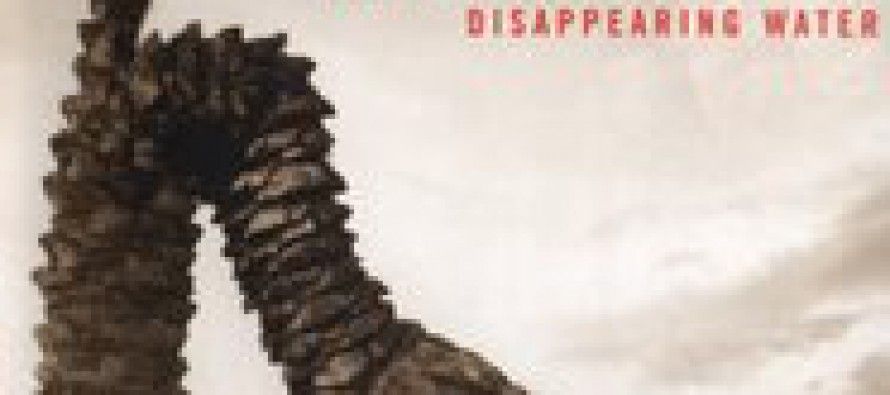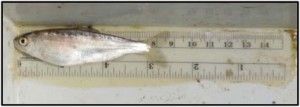Delta’s ‘Cadillac Desert’ image blown out of the water

 Probably the most mentally riveting figure of speech in the history of California nature writing has been the book, “Cadillac Desert: The American West and its Disappearing Water,” by the late Marc Reisner. Part of the book was about how California rice farmers supposedly used the largest amount of water in California due to the cheap water policies of the federal government. The book’s title evokes the image of two things that don’t fit together, such as water in a barren desert.
Probably the most mentally riveting figure of speech in the history of California nature writing has been the book, “Cadillac Desert: The American West and its Disappearing Water,” by the late Marc Reisner. Part of the book was about how California rice farmers supposedly used the largest amount of water in California due to the cheap water policies of the federal government. The book’s title evokes the image of two things that don’t fit together, such as water in a barren desert.
Countering Reisner’s book is new research by the University of California at Davis Center for Watershed Sciences that has found rice fields can serve as substitutes for wetlands that also are feeding ponds for salmon. The study indicates the metaphor of exploitative rice farmers doesn’t meet environmental reality and it likely never did.
As reported in the Oct. 25 issue of the Sutter County “Appeal-Democrat,” it has been found that rice fields can serve as “fattening grounds” before before salmon migrate to the ocean.
The study found that salmon grew fatter in plowed rice fields than in natural wetlands or irrigated farmland with stubble or weedy vegetation. Researchers proclaimed that the Yolo Bypass rice fields were “an all-you-can-eat buffet” for juvenile salmon prior to their migrating to the sea. The project was dubbed the “Nigiri Project,” after the name of a form of sushi with a slice of fish on top of a serving of rice.
 According to researchers, a salmon’s size is an indicator of its likelihood of returning to upstream fresh water spawning grounds. Salmon had a five-fold weight gain in six weeks of the study. This was among the highest ever recorded.
According to researchers, a salmon’s size is an indicator of its likelihood of returning to upstream fresh water spawning grounds. Salmon had a five-fold weight gain in six weeks of the study. This was among the highest ever recorded.
The nearby pictures show the size of the salmon at the beginning of the study (top photo), and after the study (bottom photo).
 The U.C. Davis researchers selected three 100-acre cornfields in the Delta and converted them to rice fields with the cooperation of local farmers. The study focused on methods to grow rice that would reduce Dissolved Organic Carbon (DOC’s), Disinfection Byproducts (DBP’s), trihalomethanes (THM’s), and Haloacetic Acids (HAA’s). The DBP’s are regulated by the U.S. Environmental Protection Agency as carcinogenic (cancer causing) and mutagenic (mutation causing) at toxic levels.
The U.C. Davis researchers selected three 100-acre cornfields in the Delta and converted them to rice fields with the cooperation of local farmers. The study focused on methods to grow rice that would reduce Dissolved Organic Carbon (DOC’s), Disinfection Byproducts (DBP’s), trihalomethanes (THM’s), and Haloacetic Acids (HAA’s). The DBP’s are regulated by the U.S. Environmental Protection Agency as carcinogenic (cancer causing) and mutagenic (mutation causing) at toxic levels.
Farmers cooperating with the study on their lands included Cal Marsh, Farm Ventures and Knaggs Ranch.
Funding for the study was supplied by California Trout, Knaggs Ranch, the Metropolitan Water District of Southern California, the Resources Legacy Fund, the State and Federal Water Contractors Agency and the U.S. Bureau of Reclamation.
Water shared and re-used, not exploited
Ninety-five percent of the Central Valley floodplain was historically used as Chinook salmon feeding grounds. Farming has diked, drained and altered the flooding patterns of the Delta.
The same 500,000 acres on which is grown 95 percent of the $1.3 billion annual rice crop in California serve as an “inland sea” that holds both ocean and fresh water. Delta water eventually is pumped through the California Aqueduct to Southland cities and Central Valley farms.
Delta water is reused many times over before it ends up irrigating a farm or a homeowner’s lawn. Farmers aren’t exploiters of cheap federal water subsidies as much as they are temporary stewards of the water that grows rice and also serves as habitat for fish and waterfowl. Farmers now plant short-stature rice varieties and use rice field laser-leveling techniques to use less water.
The U.C. study has huge implications for the pending Bay Delta Conservation Plan. That is because environmental organizations oppose the plan on the basis that it will speed the extinction of the Chinook salmon.
‘Cadillac Desert’ metaphor needs to be scrapped for Delta Plan
The figure of speech “Cadillac Desert” was never accurate, despite its proliferation into the book and film media, academia and pop culture. Even the Los Angeles Times obituary page admitted that Reisner recanted the thesis of his book before his death. After he first published his book in 1986, Reisner was a responsible environmentalist and journalist who joined rice farmers and co-founded the Ricelands Habitat Partnership. He also went into business with rice farmers to make fiberboard from compressed straw.
For water and environmental policy to progress in California’s Delta, the “Cadillac Desert” image of Delta rice farming is going to have to be junked and hauled to the scrapyard as obsolescent. Or perhaps it should be kept as an historical relic to remind us of the folly of setting water and environmental policy on the basis of popular but false metaphors.
Related Articles
Gov. Brown Halts State Building Sale
Katy Grimes: For one year, I’ve been writing about the smelly deal of the sale of the 11 state-owned properties.
Spectacular waste in redwood forests
JULY 11, 2011 As I took the nearly six-hour drive recently from the Sacramento area, past Ukiah and up to
Frank Luntz and Willie Brown debate or entertain?
In the Red Corner was Frank Luntz, political pollster and consultant. And In the Blue Corner, Willie Brown, former Speaker


